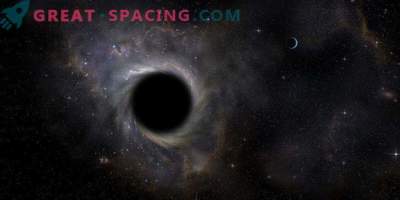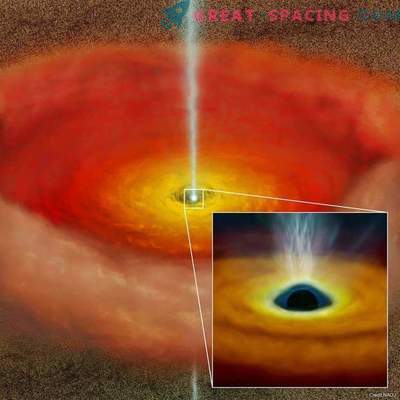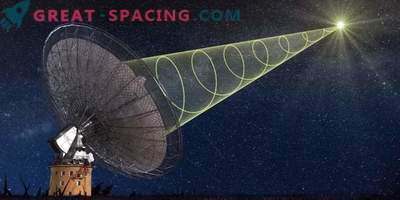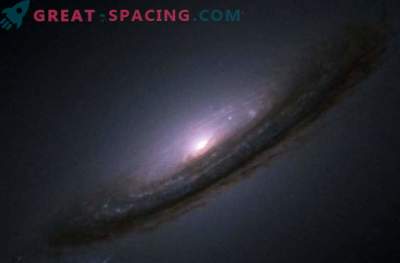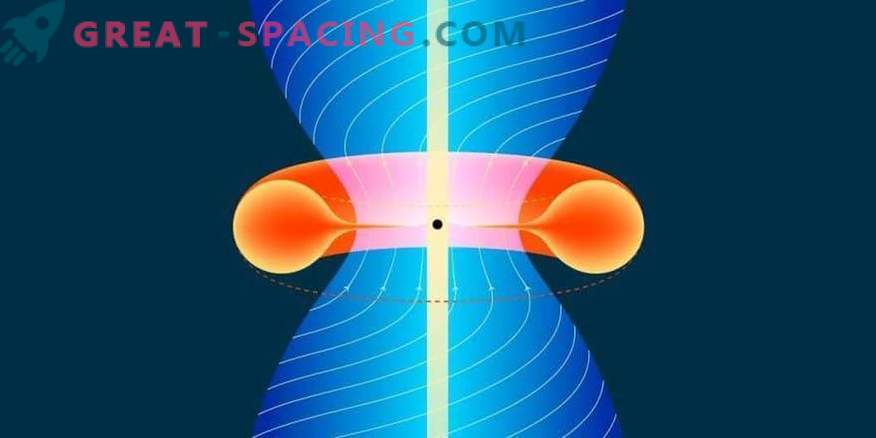
Accretion disk (red) around a supermassive black hole. Rays released vertically
Astrophysicists have developed a new model to test the hypothesis of supermassive black holes in galactic centers. With its help, it is possible to predict how much rotational energy a black hole loses when it releases rays of an ionizing substance (astrophysical jets). Energy losses are estimated based on calculations of the magnetic field of the jet.
Scientists have watched hundreds of relativistic jets. We are talking about large outflows of matter secreted by active galactic nuclei harboring supermassive black holes. Matter in the jet accelerates to almost the speed of light, so the term “relativistic” is used. These jets are enormous, even in astronomical frameworks - they can be pulled out by a few percent of the galactic radius (300,000 times the corresponding black hole).
But there are still many questions about jets. In fact, researchers still do not know exactly what they are made of, since the survey does not provide spectral lines. It is assumed that they are represented by electrons and positrons or protons. The matter rotating and falling into a black hole is called an accretion disk. That it plays an important role in the formation of the jet. It is believed that a black hole with an accretion disk becomes the most effective mechanism for energy transformation (it can exceed 100%).
In its own way, the principle resembles the work of an electric bicycle. However, there is a mismatch between the incoming energy and the released energy. It seems that there is a hidden energy source. This is a kind of battery that feeds the rotation of a black hole.
With the help of accretion, a black hole gets an angular momentum (accelerates). The jets are woven into the energy of rotation. Similar effects can be seen in young stellar objects. But their rotation speed is much less.
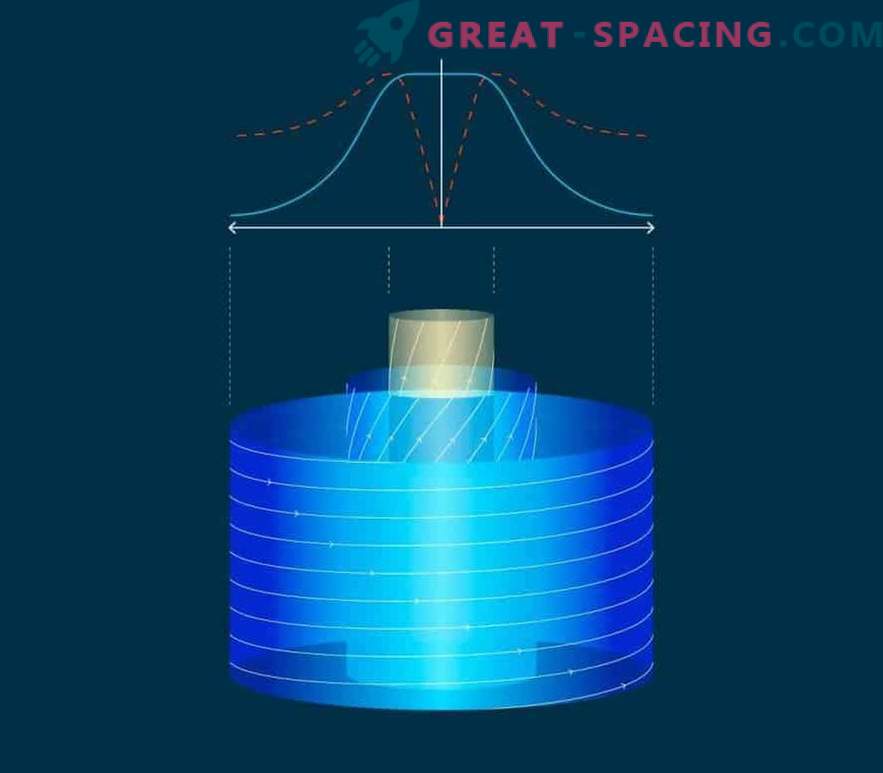
Transverse magnetic field structure of the jet
Recently, scientists have created a new method for measuring magnetic fields in jets, released by active galactic nuclei. A black hole does not have its own magnetic field. But around it a vertical magnetic field is generated by an ionizable substance in the accretion disk. To calculate the loss of rotational energy, it is necessary to find the magnetic flux through the boundary around the black hole (event horizon). Having a massive black hole, you can calculate the distance from the axis of rotation to the event horizon. This allows you to determine the electric potential difference between the axis of rotation and the boundary. When taking into account the screened electric field in the plasma, an electric current near the black hole can be detected. Knowing the indicators of current and potential difference, it will be possible to estimate the amount of energy lost.
The analysis shows a correlation between total jet power and loss of rotational energy. Interestingly, the study uses a recent model of reactive structure. Previously, the jets were thought to have a uniform transverse structure. Now the jet field is non-uniform, which offers more accurate results.
Most galaxies with jets live too far to determine the exact structure of their magnetic fields. Therefore, we can only rely on experiments and models. This theoretical work allows us to estimate the loss of rotational energy without knowing the rotational speed. It takes only a measurement of the magnetic field.




